For the implications of U.S. global power, the collapse of Kabul was incomparably worse than the fall of Saigon, writes Alfred W. McCoy.

Chinese cargo trucks awaiting Pakistan customs clearance in 2007 at Sost, the last town inside Pakistan before the Chinese border. (Anthony Maw, CC BY-SA 3.0, Wikimedia Commons)
By Alfred McCoy
TomDispatch.com
 The collapse of the American project in Afghanistan may fade fast from the news in the U.S., but don’t be fooled. It couldn’t be more significant in ways few in the country can even begin to grasp.
The collapse of the American project in Afghanistan may fade fast from the news in the U.S., but don’t be fooled. It couldn’t be more significant in ways few in the country can even begin to grasp.
“Remember, this is not Saigon,” Secretary of State Antony Blinken told a television audience on Aug. 15, the day the Taliban swept into the Afghan capital, pausing to pose for photos in the grandly gilded presidential palace. He was dutifully echoing his boss, President Joe Biden, who had earlier rejected any comparison with the fall of the South Vietnamese capital, Saigon, in 1975, insisting that “there’s going to be no circumstance where you see people being lifted off the roof of an embassy of the United States from Afghanistan. It is not at all comparable.”
Both were right, but not in the ways they intended. Indeed, the collapse of Kabul was not comparable. It was worse, incomparably so. And its implications for the future of U.S. global power are far more serious than the loss of Saigon.
On the surface, similarities abound. In both South Vietnam and Afghanistan, Washington spent 20 years and countless billions of dollars building up massive, conventional armies, convinced that they could hold off the enemy for a decent interval after the U.S. departure. But presidents Nguyen Van Thieu of South Vietnam and Ashraf Ghani of Afghanistan both proved to be incompetent leaders who never had a chance of retaining power without continued fulsome American backing.
Amid a massive North Vietnamese offensive in the spring of 1975, President Thieu panicked and ordered his army to abandon the northern half of the country, a decision that precipitated Saigon’s fall just six weeks later. As the Taliban swept across the countryside this summer, President Ghani retreated into a fog of denial, insisting his troops defend every remote, rural district, allowing the Taliban to springboard from seizing provincial capitals to capturing Kabul in just 10 days.
With the enemy at the gates, President Thieu filled his suitcases with clinking gold bars for his flight into exile, while President Ghani (according to Russian reports) snuck off to the airport in a cavalcade of cars loaded with cash. As enemy forces entered Saigon and Kabul, helicopters ferried American officials from the U.S. embassy to safety, even as surrounding city streets swarmed with panicked local citizens desperate to board departing flights.
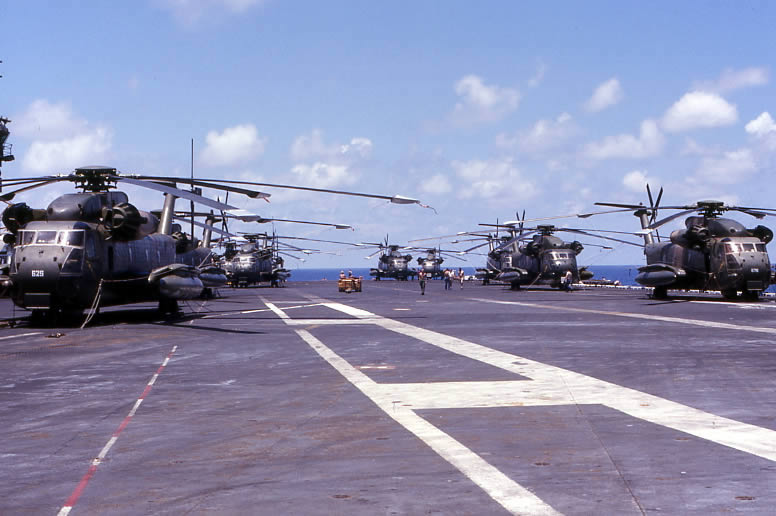
U.S. helicopters on the deck of the aircraft carrier USS Midway (CV-41) during the evacuation of Saigon, April 1975. (DanMS, Wikimedia Commons)
Critical Differences
So much for similarities. As it happens, the differences were deep and portentous. By every measure, the U.S. capacity for building and supporting allied armies has declined markedly in the 45 years between Saigon and Kabul. After Thieu ordered that disastrous northern retreat, replete with dismal scenes of soldiers clubbing civilians to board evacuation flights bound for Saigon, South Vietnam’s generals ignored their incompetent commander-in-chief and actually began to fight.
On the road to Saigon at Xuan Loc, an ordinary South Vietnamese unit, the 18th Division, fought battle-hardened North Vietnamese regulars backed by tanks, trucks and artillery to a standstill for two full weeks. Not only did those South Vietnamese soldiers take heavy casualties, with more than a third of their men killed or wounded, but they held their positions through those long days of “meat-grinder” combat until the enemy had to circle around them to reach the capital.
In those desperate hours as Saigon was falling, General Nguyen Khoa Nam, head of the only intact South Vietnamese command, faced an impossible choice between making a last stand in the Mekong Delta and capitulating to communist emissaries who promised him a peaceful surrender.
“If I am unable to carry out my job of protecting the nation,” the general told a subordinate, “then I must die, along with my nation.” That night, seated at his desk, the general shot himself in the head. In South Vietnam’s last hours as a state, four of his fellow generals also committed suicide. At least 40 more lower-ranking officers and soldiers also chose death over dishonor.
On the road to Kabul, by contrast, there were no heroic last stands by regular Afghan army units, no protracted combat, no heavy casualties and certainly no command suicides.
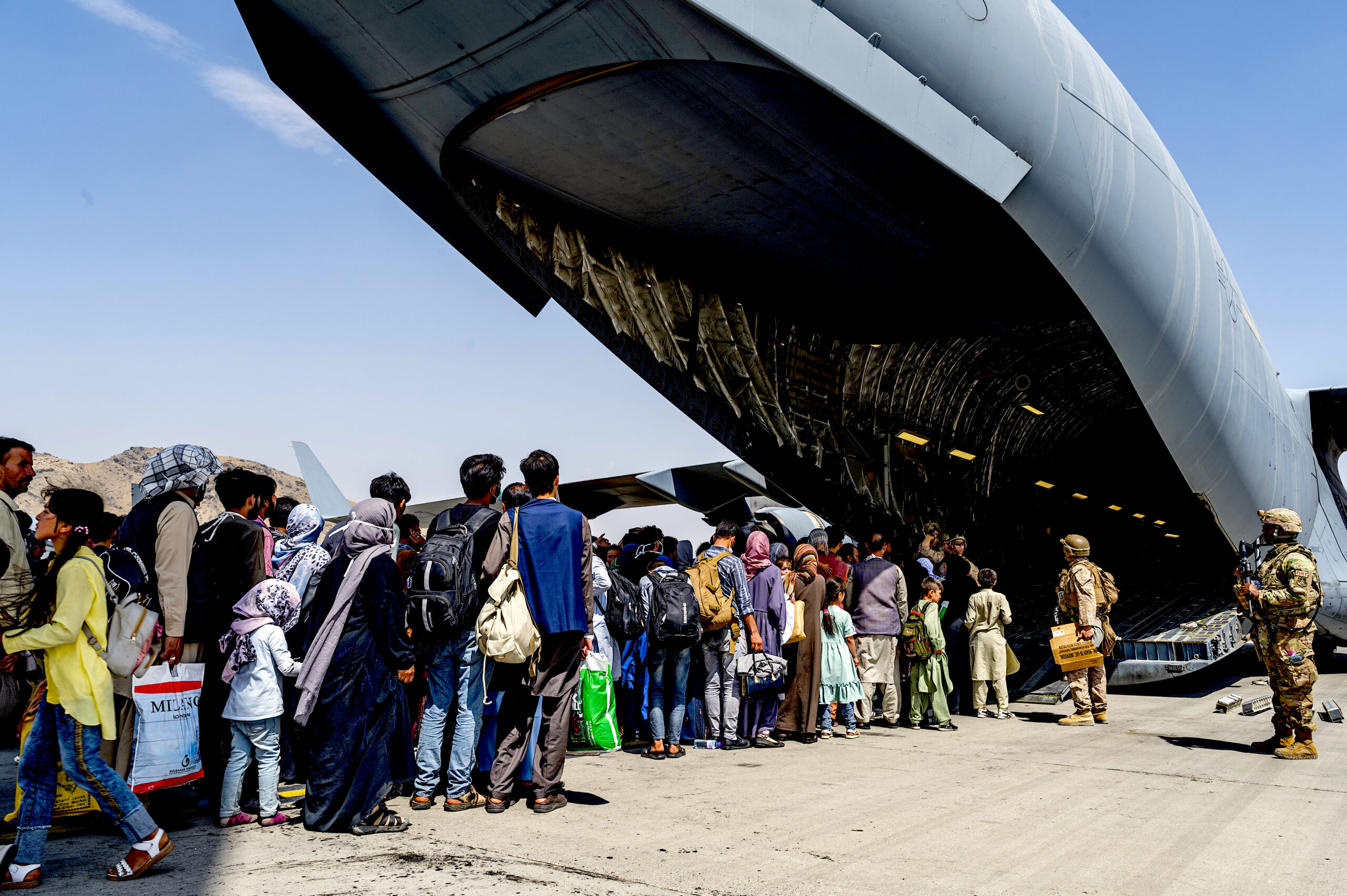
U.S. soldiers with Afghans boarding a C-17 Globemaster III at Hamid Karzai International Airport on Aug. 21 after the Taliban captured Kabul. (U.S. Air Force, Brennen Lege)
In the nine days between the fall of Afghanistan’s first provincial capital on Aug. 6 and the capture of Kabul on Aug. 15, all of the well-equipped, well-trained Afghan soldiers simply faded away before Taliban guerrillas equipped mainly with rifles and tennis sneakers.
After losing their salaries and rations to graft for the previous six to nine months, those hungry Afghan troops simply surrendered en masse, took Taliban cash payments, and handed over their weapons and other costly U.S. equipment.
By the time the guerrillas reached Kabul, driving Humvees and wearing Kevlar helmets, night-vision goggles and body armor, they looked like so many NATO soldiers. Instead of taking a bullet, Afghanistan’s commanders took the cash — both graft from padding their payrolls with “ghost soldiers” and bribes from the Taliban.
The difference between Saigon and Kabul has little to do with the fighting ability of the Afghan soldier. As the British and Soviet empires learned to their dismay when guerrillas slaughtered their soldiers in spectacular numbers, ordinary Afghan farmers are arguably the world’s finest fighters. So why wouldn’t they fight for Ashraf Ghani and his secular democratic state in far-off Kabul?
The key difference would seem to lie in the fading of America’s aura as the planet’s No. 1 power and of its state-building capacities. At the peak of its global hegemony back in the 1960s, the United States, with its unequalled material resources and moral authority, could make a reasonably convincing case to the South Vietnamese that the political mix of electoral democracy and capitalist development it sponsored was the way forward for any nation.
Today, with its reduced global clout and tarnished record in Iraq, Libya, and Syria (as well as in prisons like Abu Ghraib and Guantanamo), America’s capacity to infuse its nation-building projects with any real legitimacy — that elusive sine qua non for the survival of any state — has apparently dropped significantly.
The Impact on U.S. Global Power
In 1975, the fall of Saigon did indeed prove a setback to Washington’s world order. Still, America’s underlying strength, both economic and military, was robust enough then for a partial rebound.
Adding to the sense of crisis at the time, the loss of South Vietnam coincided with two more substantial blows to Washington’s international system and the clout that went with it. Just a few years before Saigon’s collapse, the German and Japanese export booms had so eroded America’s commanding global economic position that the Nixon administration had to end the automatic convertibility of the dollar to gold. That, in turn, effectively broke the Bretton Woods system that had been the foundation of U.S. economic strength since 1944.
Meanwhile, with Washington mired in its self-made Vietnam quagmire, that other Cold War power, the Soviet Union, continued to build hundreds of nuclear-armed missiles and so functionally forced Washington to recognize its military parity in 1972 by signing the Anti-Ballistic Missile Treaty and Strategic Arms Limitation Protocol.
With the weakening of the economic and nuclear pillars on which so much of America’s paramount power rested, Washington was forced to retreat from its role as the great global hegemon and become a mere first among others.
Washington’s Relations with Europe
Almost half a century later, the sudden, humiliating fall of Kabul threatens even that more limited leadership role. Although the U.S. occupied Afghanistan for 20 years with the full support of its NATO allies, when Biden walked away from that shared “nation-building” mission, he did so without the slightest consultation with those very allies.
America lost 2,461 soldiers in Afghanistan, including 13 who died during the airport evacuation. Its allies suffered 1,145 killed, including 62 German soldiers and 457 British troops. No wonder those partners held understandable grievances when Biden acted without the slightest notice to or discussion with them.
“There is serious loss of trust,” observed Wolfgang Ischinger, the former German ambassador to Washington. “But the real lesson… for Europe is this: Do we really want to be totally dependent on U.S. capabilities and decisions forever, or can Europe finally begin to be serious about becoming a credible strategic actor?”
For Europe’s more visionary leaders like French President Emmanuel Macron, the answer to that timely question was obvious: build a European defense force free from Washington’s whims and so avoid “the Chinese-American duopoly, the dislocation, the return of hostile regional powers.” In fact, right after the last American planes left Kabul, a summit of European Union officials made it clear that the time had come to stop “depending on American decisions.” They called for the creation of a European army that would give them “greater decision-making autonomy and greater capacity for action in the world.”
In short, with America First populism now a major force in this country’s politics, assume that Europe will pursue a foreign policy increasingly freed from Washington’s influence.
Central Asia’s Geopolitics
And Europe may be the least of it. The stunning capture of Kabul highlighted an American loss of leadership that extended into Asia and Africa, with profound geopolitical implications for the future of U.S. global power. Above all, the Taliban’s victory will effectively force Washington out of Central Asia and so help to consolidate Beijing’s already ongoing control over parts of that strategic region. It, in turn, could prove to be the potential geopolitical pivot for China’s dominance over the vast Eurasian land mass, home to 70 percent of the globe’s population and productivity.

Xi Jinping, at right, with U.S. President George W. Bush in August 2008. (White House, Eric Draper, Wikimedia Commons)
Speaking at Nazarbayev University in Kazakhstan in 2013 (though nobody in Washington was then listening), China’s President Xi Jinping announced his country’s strategy for winning the 21st century version of the deadly “great game” that 19-century empires once played for control of Central Asia.
With gentle gestures that belied his imperious [but non-military] intent, Xi asked that academic audience to join him in building an “economic belt along the Silk Road” that would “expand development space in the Eurasian region” through infrastructure “connecting the Pacific and the Baltic Sea.”
In the process of establishing that “belt and road” structure, they would, he claimed, be building “the biggest market in the world with unparalleled potential.”
In the eight years since that speech, China has indeed been spending over a trillion dollars on its “Belt and Road Initiative” (BRI) to construct a transcontinental grid of railroads, oil pipelines and industrial infrastructure in a bid to become the world’s premier economic power.
More specifically, Beijing has used the BRI as a geopolitical pincers movement, a diplomatic squeeze play. By laying down infrastructure around the northern, eastern and western borders of Afghanistan, it has prepared the way for that war-torn nation, freed of American influence and full of untapped mineral resources (estimated at a trillion dollars), to fall safely into Beijing’s grasp without a shot being fired.
To the north of Afghanistan, the China National Petroleum Corporation has collaborated with Turkmenistan, Kazakhstan and Uzbekistan to launch the Central Asia–China gas pipeline, a system that will eventually extend more than 4,000 miles across the heart of Eurasia.
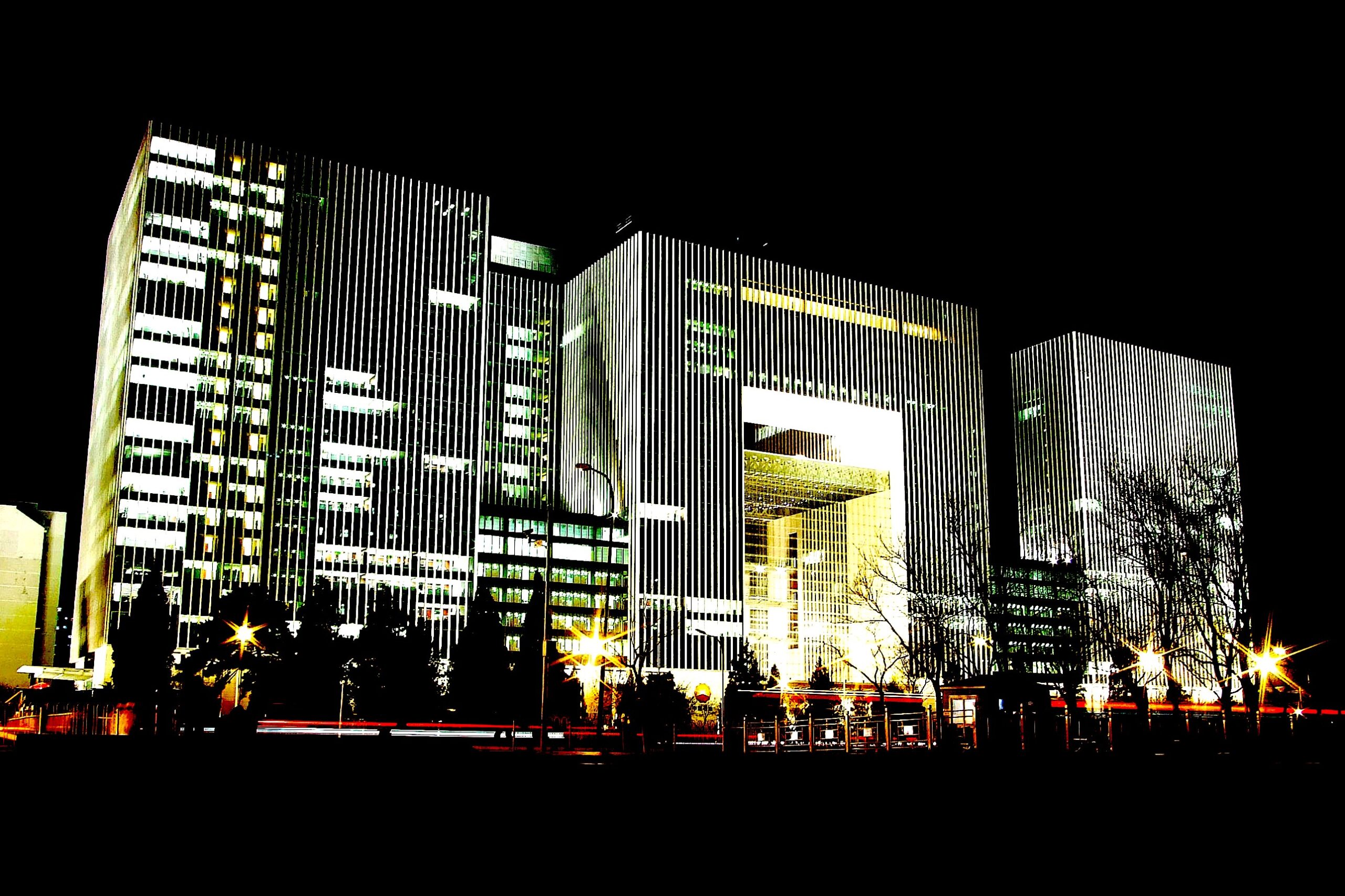
The Beijing headquarters of China National Petroleum Corporation and PetroChina. (Charlie Fong, Wikimedia Commons)
Along Afghanistan’s eastern frontier, Beijing began spending $200 million in 2011 to transform a sleepy fishing village at Gwadar, Pakistan, on the Arabian Sea, into a modern commercial port only 370 miles from the oil-rich Persian Gulf.
Four years later, President Xi committed $46 billion to building a China–Pakistan Economic Corridor of roads, rails, and pipelines stretching nearly 2,000 miles along Afghanistan’s eastern borderlands from China’s western provinces to the now-modernized port of Gwadar.
To the west of Afghanistan, Beijing broke through Iran’s diplomatic isolation last March by signing a $400 billion development agreement with Tehran. Over the next 25 years, China’s legions of laborers and engineers will lay down a transit corridor of oil and natural gas pipelines to China, while also building a vast new rail network that will make Tehran the hub of a line stretching from Istanbul, Turkey, to Islamabad, Pakistan.
By the time these geopolitical pincers pull Afghanistan firmly into Beijing’s BRI system, the country may have become just another Middle Eastern theocracy like Iran or Saudi Arabia.
While the religious police harass women and troops battle festering insurgencies, the Taliban state can get down to its real business — not defending Islam, but cutting deals with China to mine its vast reserves of rare minerals and collect transit taxes on the new $10 billion TAPI gas pipeline from Turkmenistan to Pakistan (which desperately needs affordable energy).
With lucrative royalties from its vast store of rare-earth minerals, the Taliban could afford to end its current fiscal dependence on drugs. They could actually ban the country’s now booming opium harvest, a promise their new government spokesman has already made in a bid for international recognition. Over time, the Taliban leadership might discover, like the leaders of Saudi Arabia and Iran, that a developing economy can’t afford to waste its women. As a result, there might even be some slow, fitful progress on that front, too.
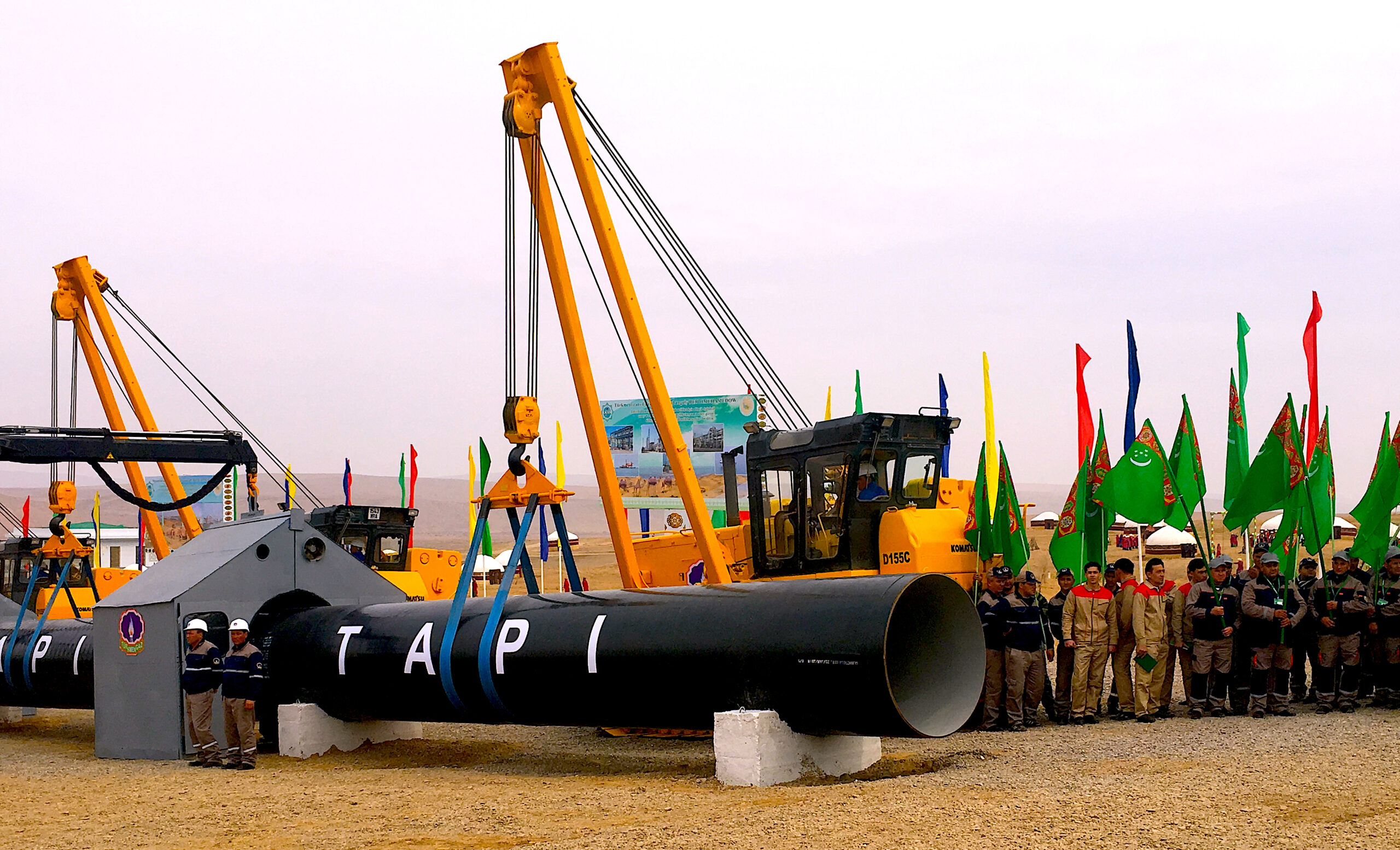
Ceremony on completion of the Turkmen section of the Turkmenistan-Afghanistan-Pakistan-India natural gas pipeline. (Allan Mustard, CC BY-SA 4.0, Wikimedia Commons)
If such a projection of China’s future economic role in Afghanistan seems fanciful to you, consider that the underpinnings for just such a future deal were being put in place while Washington was still dithering over Kabul’s fate. At a formal meeting with a Taliban delegation in July, China’s foreign minister Wang Yi hailed their movement as “an important military and political force.”
In response, Taliban head Mullah Abdul Baradar, displaying the very leadership that American-installed President Ashraf Ghani so clearly lacked, praised China as a “reliable friend” and promised to foster “an enabling investment environment” so that Beijing could play “a bigger role in future reconstruction and economic development.”
Formalities finished, the Afghan delegation then met behind closed doors with China’s assistant foreign minister to exchange what the official communiqué called “in-depth views on issues of common concern, which helped enhance mutual understanding” — in short, who gets what and for how much.
The World-Island Strategy
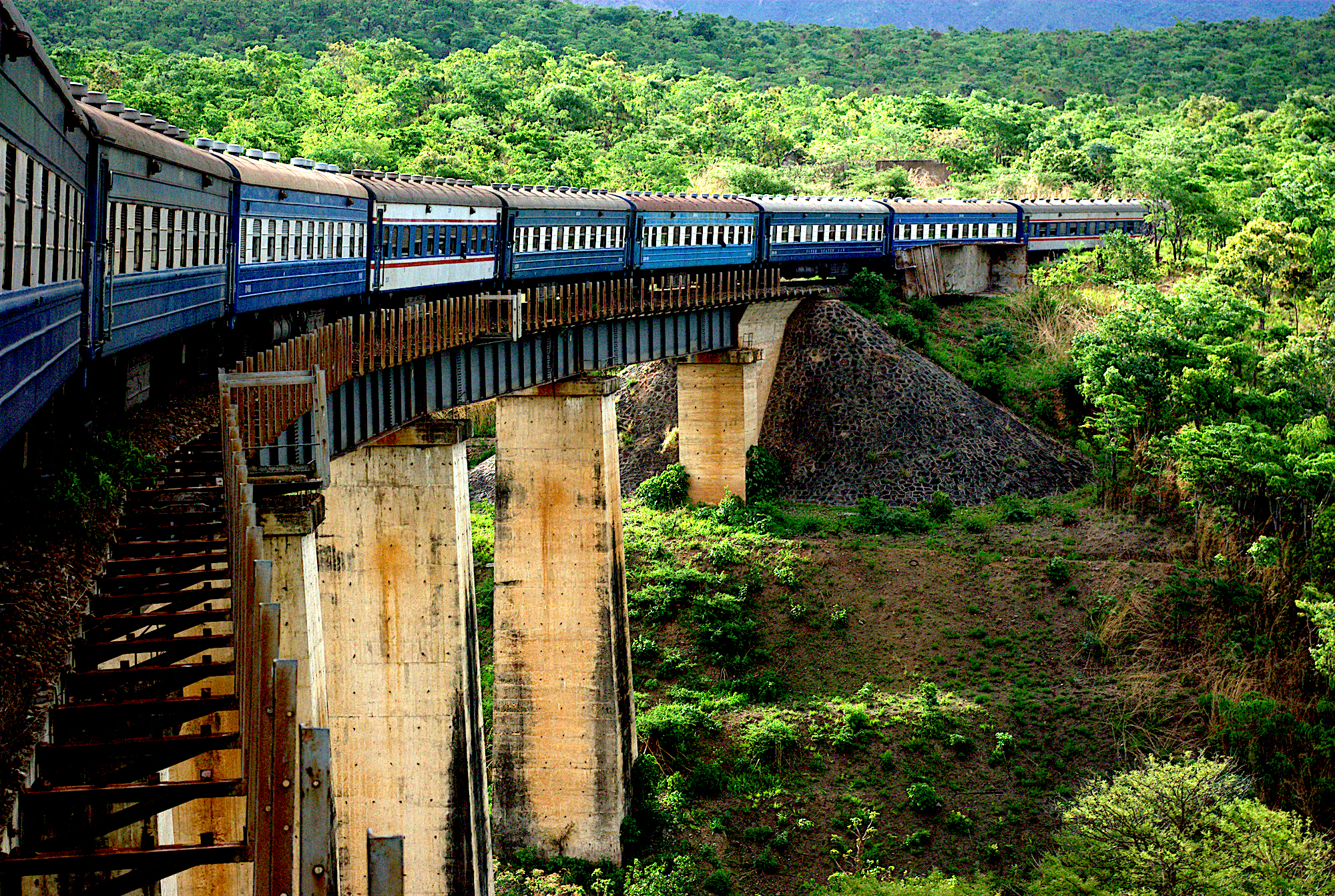
Bridge crossing of Tazara Railway in Zambia in 2009. (Richard Stupart, Flickr, CC BY 2.0, Wikimedia Commons)
China’s capture of Eurasia, should it be successful, will be but one part of a far grander design for control over what Victorian geographer Halford Mackinder, an early master of modern geopolitics, called the “world island.” He meant the tricontinental land mass comprising the three continents of Europe, Asia and Africa. For the past 500 years, one imperial hegemon after another, including Portugal, Holland, Britain and the United States, has deployed its strategic forces around that world island in a bid to dominate such a sprawling land mass.
While for the last half-century Washington has arrayed its vast air and naval armadas around Eurasia, it generally relegated Africa to, at best, an afterthought — at worst, a battleground. Beijing, by contrast, has consistently treated that continent with the utmost seriousness.
When the Cold War came to southern Africa in the early 1970s, Washington spent the next 20 years in an arm’s-length alliance with apartheid South Africa, while using the CIA to fight a leftist liberation movement in Portuguese-controlled Angola.
While Washington spent billions wreaking havoc by supplying right-wing African warlords with automatic weapons and land mines, Beijing launched its first major foreign-aid project. It built the thousand-mile Tanzania-to-Zambia railway. Not only was it the longest in Africa when completed in 1975, but it allowed landlocked Zambia, a front-line state in the struggle against the apartheid regime in Pretoria, to avoid South Africa when exporting its copper.
From 2015 on, building upon its historic ties to the liberation movements that won power across southern Africa, Beijing planned a decade-long trillion-dollar infusion of capital there. Much of it was to be designated for commodities-extraction projects that would make that continent China’s second-largest source of crude oil. With such an investment (equaling its later BRI commitments to Eurasia), China also doubled its annual trade with Africa to $222 billion, three times America’s total.
While that aid to liberation movements once had an ideological undercurrent, today it’s been succeeded by savvy geopolitics. Beijing seems to understand just how fast Africa’s progress has been in the single generation since that continent won its freedom from a particularly rapacious version of colonial rule. Given that it’s the planet’s second-most populous continent, rich in human and material resources, China’s trillion-dollar bet on Africa’s future will likely pay rich dividends, both political and economic, someday soon.
With a trillion dollars invested in Eurasia and another trillion in Africa, China is engaged in nothing less than history’s largest infrastructure project. It’s crisscrossing those three continents with rails and pipelines, building naval bases around the southern rim of Asia, and ringing the whole tricontinental world island with a string of 40 major commercial ports.
Such a geopolitical strategy has become Beijing’s battering ram to crack open Washington’s control over Eurasia and thereby challenge what’s left of its global hegemony.
America’s unequalled military air and sea armadas still allow it rapid movement above and around those continents, as the mass evacuation from Kabul showed so forcefully. But the slow, inch-by-inch advance of China’s land-based, steel-ribbed infrastructure across the deserts, plains, and mountains of that world island represents a far more fundamental form of future control.
As China’s geopolitical squeeze play on Afghanistan shows all too vividly, there is still much wisdom in the words that Sir Halford Mackinder wrote over a century ago: “Who rules the World Island commands the World.”
To that, after watching a Washington that’s invested so much in its military be humiliated in Afghanistan, we might add: Who does not command the World Island cannot command the World.
Alfred W. McCoy, a TomDispatch regular, is the Harrington professor of history at the University of Wisconsin-Madison. He is the author most recently of In the Shadows of the American Century: The Rise and Decline of U.S. Global Power (Dispatch Books). His latest book (to be published in October by Dispatch Books) is To Govern the Globe: World Orders and Catastrophic Change.
This article is from TomDispatch.com.
The views expressed are solely those of the author and may or may not reflect those of Consortium News.

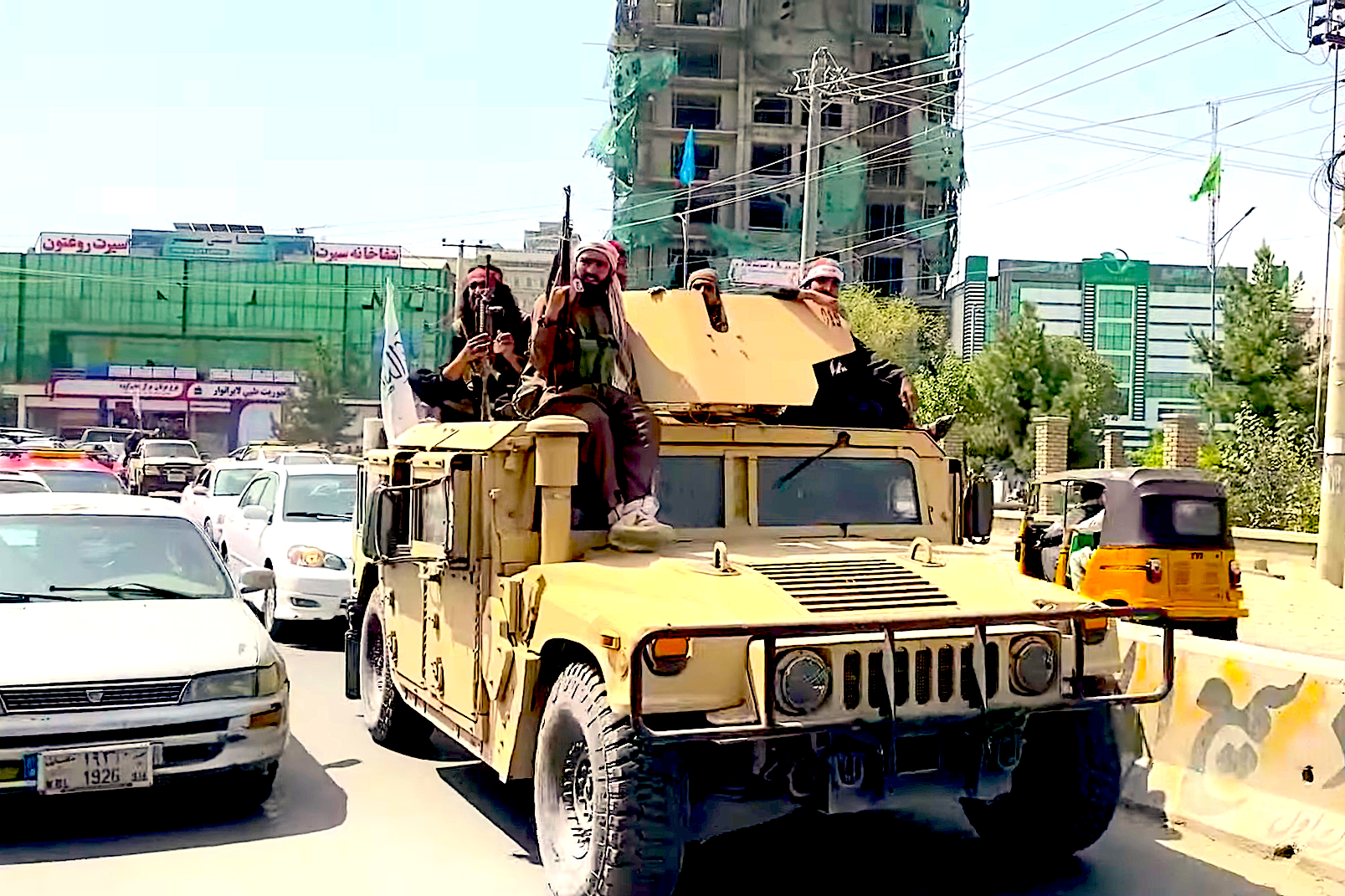
“At the peak of its global hegemony back in the 1960s, the United States, with its unequalled material resources and moral authority,”
Moral authority? With all the My Lais and a policy of “kill anything that moves”? To most Vietnamese, and Afghans and every normal human being there is nothing moral in a murderous occupying army. The untenable position of the US occupation was well-illustrated by the many changes in command in the South Vietnamese army since the assassinations of Ngo Dinh Diem and his brother, not to mention the mass demonstrations back home with slogans like “LBJ, how many kids have you killed today?’
A zero-sum strategy to rule the world vs. a win-win strategy to be part of it. The US had its chance and sacrificed it on the altar of short-term profits for a few, dreams of empire and a centurion joy of conquering both people and the earth. It was always going to be an inevitable loss to both. My money is on win-win. Much better for everyone and, in fact, the only real chance for a sustainable future. Now, if we can just survive…
This is an excellent article. McCoy nails what a disaster the Afghan rout has been for the Americans and their “allies” – far worse than the collapse of the American War in Vietnam. Thank you for republishing it.
This is the kind of informative reporting that makes our world position crystal clear.
The PNAC initiative was a disaster.
The USA had no right to invade Vietnam and then deny the agreed upon elections after the French had lost their war to keep Vietnam as a Colony. First the US funded the French military’s fight to keep Vietnam a French Colony. When the French lost, the US took over in their place and denied the Vietnamese the right to vote which had been agreed to and signed in Treaty. Ho Chi Minh was an admirer of the USA and our supposed Democracy. So, the only real difference was the ARVN standing and fighting and dying. US had no right to be there in the first place, which is why it was a secret to begin with. When Johnson lied about an attack on a U.S. Ship in the Gulf of Tonkin, so he could declare war, the US was already there with the CIA, soldiers and were supporting the corrupt Diem family, as rulers. This is what Daniel Ellsberg exposed when he leaked what is called the Pentagon Papers. He had been there in support of U.S. role there and had written much of that report himself for the Rand Corporation, but supported the US being there until his eyes, mind and heart opened up to the truth, that it was immoral and illegal and many people were dying and being tortured by the US and our soldiers were fighting and dying based on lies. War is a Lie.
Well said, Susan
… Biden acted without the slightest notice to or discussion with them.
“There is serious loss of trust,” observed Wolfgang Ischinger, the former German ambassador to Washington. “But the real lesson… for Europe is this: Do we really want to be totally dependent on U.S. capabilities and decisions forever, or can Europe finally begin to be serious about becoming a credible strategic actor?”
—————–
There are many questions I would ask Herr Ischinger. First, why he raises the question NOW if “we really want to be totally dependent on U.S. decisions”? What was so good about that reliance in the preceding years? If it was not all that good, why the Ischingers of Europe sticked to it? And what “Europe as a credible strategic actor” should aim to do (and how)?
Isn’t that obvious? The USA is in decline, and China is on the rise.
The situation is partly by default. The US has not withdrawn from Europe and could have done so. The reasons are several. The forces are a useful source of income for Europe. The US decided not to keep Baker’s promise to Gorbachev that NATO would not expand to the borders of Russia. Those seeking hegemony do not want to reduce their forward deployments. The use of the dollar for international trade especially in oil, gives the USA an income. These are powerful forces and those wishing to resist are not in the majority – yet!